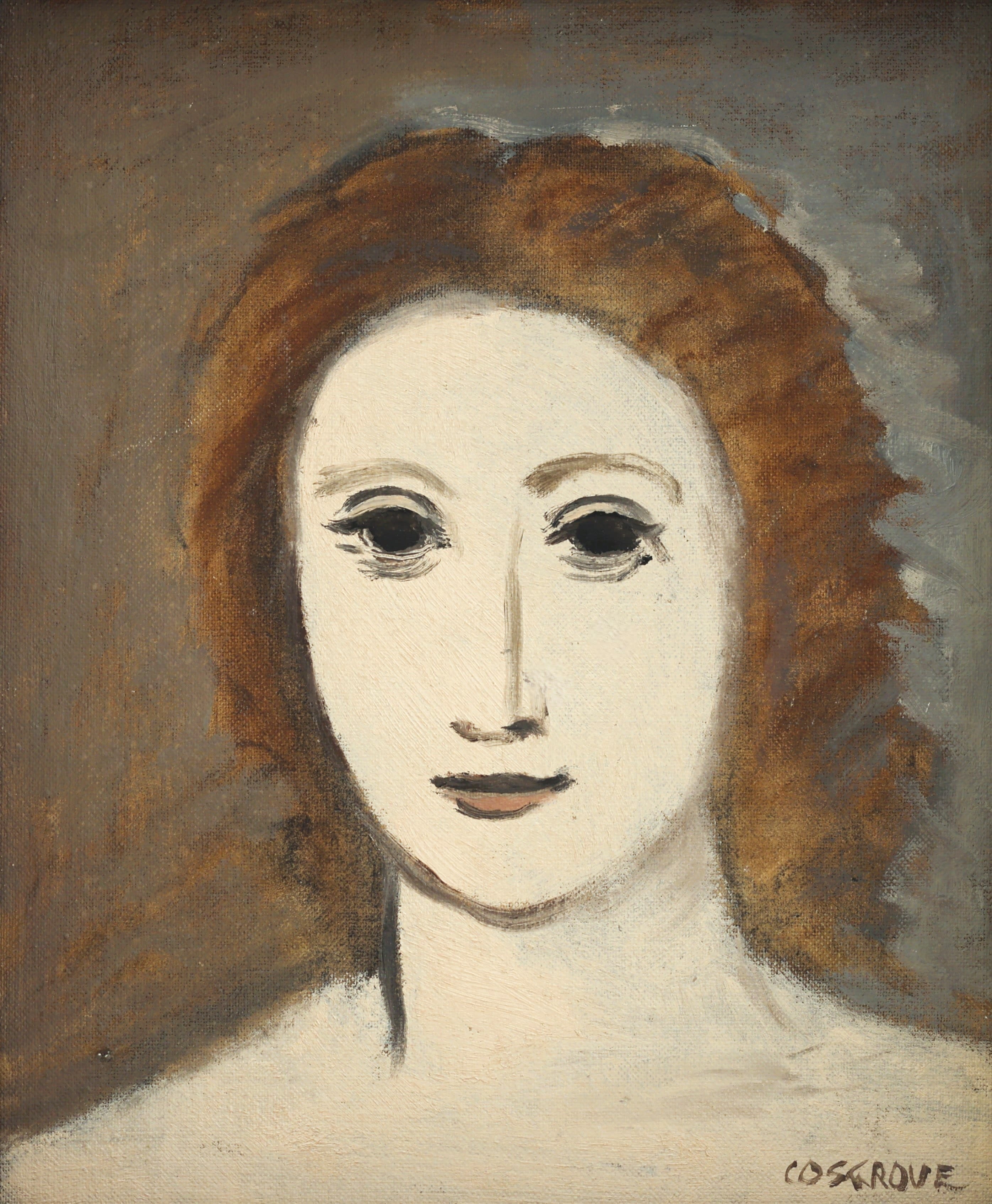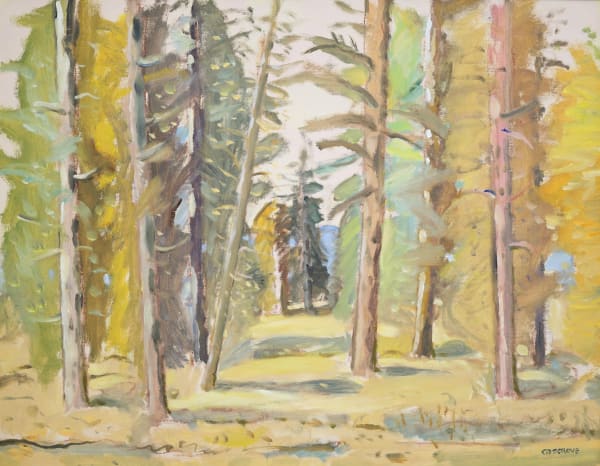Stanley Morel Cosgrove, an eminent figure in the annals of Canadian art, stands as a beacon of tranquility amidst the vibrant tapestry of the modernist era. Born in Montreal in 1911, Cosgrove embarked on a remarkable journey that would redefine the boundaries of artistic expression and shape the landscape of Canadian art for generations to come.
 Stanley Cosgrove; Lac Bouleau, La Tuque
Stanley Cosgrove; Lac Bouleau, La Tuque
Stanley Cosgrove's artistic odyssey commenced at the prestigious École des Beaux-Arts in Montreal in 1927, where he immersed himself in the timeless traditions of the craft under the tutelage of revered mentors like Edwin Holgate. Fuelled by an insatiable thirst for knowledge, Cosgrove ventured beyond the confines of academia to explore the diverse landscapes of France, the United States, and Mexico, where he delved into the rich tapestry of textile design and the ancient art of fresco painting.

Stanley Cosgrove; Forest Light
In 1939, Cosgrove's burgeoning talent garnered him a coveted invitation to exhibit at the Provincial Museum of Quebec, marking a significant milestone in his emerging career. He planned to spend four years studying in France, however, the outbreak of World War II redirected his path, leading him to the hallowed halls of the Academia de San Carlos in Mexico City in 1940. Under the guidance of the legendary fresco artist José Clemente Orozco, Cosgrove honed his craft, mastering the intricate technique of fresco painting and imbuing his work with a mesmerizing array of colours and themes.
Returning to Canada, Cosgrove's art underwent a transformative evolution, characterized by a newfound assurance and directness. Through an economy of means, he distilled the essence of his subjects, employing simplified forms and a controlled palette to convey profound expression with minimalist execution. His landscapes, suffused with harmonious serenity, spoke volumes of his deep reverence for the tranquility of nature and the human form.

Stanley Cosgrove; Portrait of a Woman
Cosgrove's oeuvre is a testament to his mastery of form and expression, marrying abstraction with naturalism to create a visual dialogue that resonates with viewers on a profound level. His affiliations with esteemed institutions like the Canadian Group of Painters and the Royal Canadian Academy of Arts, coupled with his representation in prestigious galleries worldwide, underscore his enduring legacy as a pioneering figure in Canadian art.

Stanley Cosgrove; Centennial Blue
Upon his passing in 2002 at the age of 90, Cosgrove left behind a rich legacy that continues to inspire and captivate audiences across the globe. His extraordinary canvases adorn the walls of prominent art institutions such as the Royal Canadian Academy, the Montreal Museum of Fine Arts, and the National Gallery of Canada, ensuring that his artistic brilliance remains immortalized for generations to come.

Stanley Cosgrove; Carnations and Lemons
As Montreal's artistic landscape continues to flourish, Cosgrove's spirit lives on through the École des Beaux-Arts de Montréal and the thriving art community, a testament to his enduring influence and legacy in the world of Canadian art.





 Stanley Cosgrove; Lac Bouleau, La Tuque
Stanley Cosgrove; Lac Bouleau, La Tuque 


